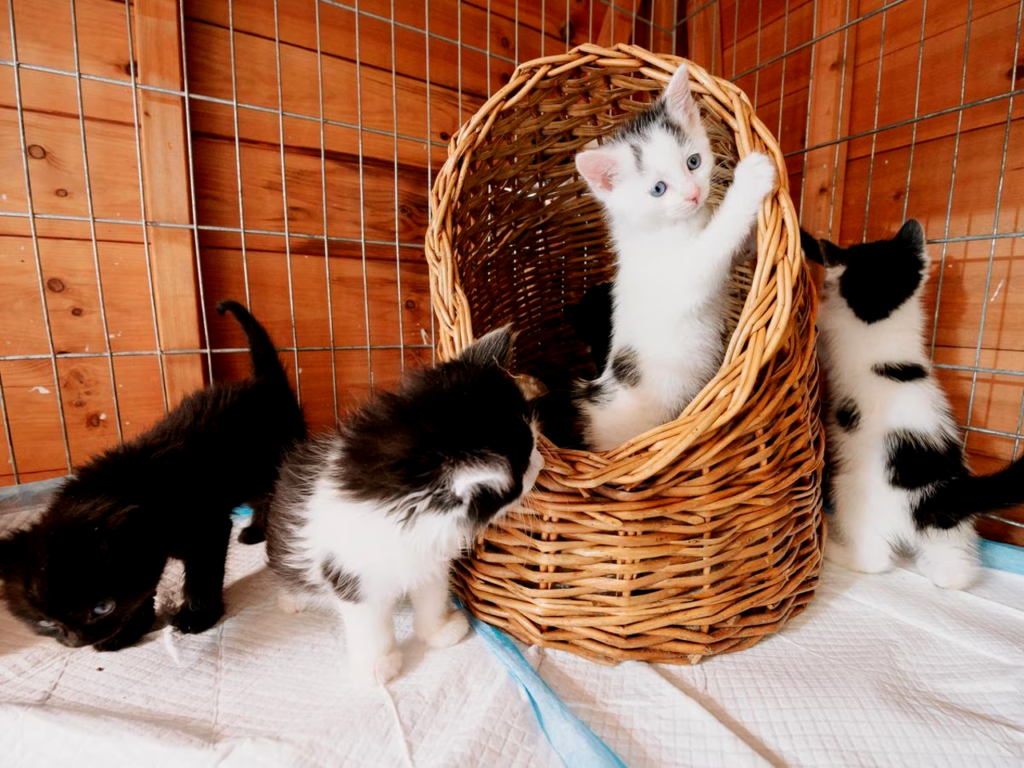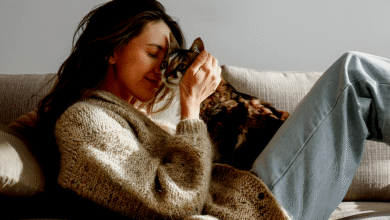
Importance of Spaying and Neutering: Controlling Pet Population
The bond between humans and their pets is undeniably special. However, with the joy and companionship come responsibilities, one of the most crucial being the management of the pet population. In this article, we will delve into the significance of spaying and neutering in controlling the ever-growing pet population.
Read More: Importance of Pet-Friendly Cities
Importance of Spaying and Neutering

Brief Overview of Spaying and Neutering
Spaying and neutering are surgical procedures designed to sterilize pets, preventing them from reproducing. These procedures are essential components of responsible pet ownership and play a crucial role in managing the ever-growing pet population.
Importance of Addressing Pet Population
As our bond with pets deepens, so do our responsibilities. Uncontrolled pet reproduction has far-reaching consequences, affecting not only individual pet owners but also the broader community. By exploring the consequences and benefits, we can understand the urgent need for responsible pet population control.
The Consequences of Uncontrolled Pet Population
Overcrowded Shelters
An uncontrolled pet population leads to overcrowded shelters, placing immense strain on resources and resulting in compromised living conditions for animals. The sheer volume often leads to increased euthanasia rates, highlighting the urgent need for intervention.
Stray Animals and Public Safety
The uncontrolled breeding of pets contributes to the rise of stray animals, posing risks to public safety. Stray animals may suffer from malnutrition and diseases, while incidents of aggression and bites increase, threatening communities.
Health Risks for Unaltered Pets
Pets that are not spayed or neutered face health risks, including reproductive cancers and infections. The impact of these risks not only affects the individual pet but also adds to the burden on veterinary services.
Benefits of Spaying and Neutering
Prevention of Unwanted Pregnancies
Spaying and neutering are highly effective in preventing unwanted pregnancies and reducing the number of unplanned litters. This not only alleviates the strain on pet owners but also plays a pivotal role in reducing the population of animals in shelters.
Improved Behavior in Pets
Altered pets often exhibit improved behavior, including reduced aggression and a decreased tendency to roam. This contributes to a safer community and enhances the overall quality of life for both pets and their owners.
Health Benefits for Altered Pets
Sterilized pets enjoy health benefits, such as a lower risk of certain cancers and infections. This not only contributes to a longer and healthier life for the individual pet but also reduces the burden on veterinary healthcare systems.
The Process of Spaying and Neutering
What Does Spaying Involve?
Spaying, for female pets, involves the removal of reproductive organs, preventing them from going into heat and eliminating the possibility of pregnancy.
Understanding Neutering
Neutering, performed on male pets, involves the removal of testicles, preventing the ability to father offspring. This procedure not only contributes to population control but also reduces certain behavioral issues in male pets.
Timing and Age Considerations
The timing of spaying and neutering is crucial. Early spaying/neutering, typically before the first heat cycle, offers the most significant health and behavioral benefits. However, the appropriate age can vary based on the species and breed, requiring consultation with a veterinarian.
Debunking Common Myths
Myth: Altering Changes a Pet’s Personality
Contrary to popular belief, spaying and neutering do not alter the fundamental personality of a pet. While it may curb certain behaviors related to reproduction, the core of the pet’s personality remains unchanged.
Myth: Only Stray Animals Need to be Altered
Every pet, regardless of its living situation, should be considered for spaying or neutering. Responsible pet ownership extends beyond strays to include pets in loving homes, contributing to a more balanced and controlled pet population.
Myth: It’s Too Expensive
While some may perceive spaying and neutering as expensive, the long-term benefits outweigh the initial costs. Reduced veterinary bills, the prevention of unplanned litter, and the positive impact on community welfare justify the investment.
The Role of Responsible Pet Ownership

Educating Pet Owners
Responsible pet ownership involves educating owners about the importance of spaying and neutering. Dispelling myths, addressing concerns, and highlighting the positive impact on pets and communities are essential components of this education.
Encouraging Adoption from Shelters
Promoting the adoption of pets from shelters, many of which are already spayed or neutered, is a responsible way to add a furry friend to the family while supporting population control efforts. This also addresses the issue of overcrowded shelters.
Addressing Concerns and Misconceptions
Fear of Surgery
The fear of surgery is a common concern among pet owners. Understanding the routine nature of spaying and neutering and advances in veterinary care can alleviate such fears. Proper education and communication are crucial in addressing this concern.
Addressing Cultural Beliefs
Cultural beliefs may influence attitudes toward spaying and neutering. Initiatives to understand and address these beliefs are crucial for widespread acceptance of these procedures. Cultural sensitivity is essential in ensuring that these practices are embraced globally.
Impact on Community Welfare
Reducing Euthanasia Rates
Communities with effective spay/neuter programs witness a substantial reduction in euthanasia rates. This not only reflects a more humane approach to animal welfare but also contributes to a healthier and more balanced ecosystem.
Financial Savings for Communities
The financial burden on communities, arising from the care of unwanted animals, is significantly reduced when proactive spaying and neutering programs are in place. This financial relief can be redirected toward other community needs.
How Individuals Can Contribute
Supporting Spay/Neuter Programs
Individuals can actively contribute to pet population control by supporting local spay/neuter programs through donations, volunteering, or spreading awareness. These programs play a pivotal role in creating a sustainable and controlled pet population.
Volunteering at Animal Shelters
Volunteering at animal shelters not only supports the care of animals but also provides firsthand insights into the challenges faced by communities dealing with pet overpopulation. It fosters a sense of community and shared responsibility.
Success Stories and Case Studies
Communities with Effective Spay/Neuter Initiatives
Exploring success stories from communities with robust spay/neuter initiatives highlights the positive outcomes and encourages others to follow suit. These success stories serve as testimonials to the effectiveness of responsible pet population control.
Positive Outcomes for Altered Pets
Sharing stories of altered pets thriving in their homes reinforces the benefits of spaying and neutering for both the animals and their owners. These positive outcomes are a testament to the positive impact of responsible pet ownership.
The Future of Pet Population Control

Advances in Spaying and Neutering Techniques
Ongoing research and technological advancements continue to refine spaying and neutering techniques. This ensures safer and more efficient procedures, reducing recovery times and making these practices more accessible to a broader range of pets.
Encouraging Legislative Support
Advocacy for legislative support plays a crucial role in establishing and maintaining effective spay/neuter programs on a broader scale. This involves working with policymakers to create and enforce regulations that support responsible pet ownership and population control.
Conclusion
Recap of Key Points
In conclusion, the importance of spaying and neutering extends beyond individual pets to the broader community. The positive impact on pet health, behavior, and community welfare emphasizes the collective responsibility we share.
Emphasis on the Collective Responsibility
As pet lovers, it is our collective responsibility to contribute to the well-being of our furry companions and the communities they inhabit. Through spaying and neutering, we can create a future where every pet has a loving home and a chance for a happy, healthy life.
Read More: The Role of Pet-Friendly Businesses: Supporting Local Pet Communities
Frequently Asked Questions (FAQs)
- Is spaying/neutering only for stray animals? No, spaying and neutering are essential for all pets, regardless of their living situation. It helps prevent unwanted pregnancies and contributes to a healthier pet population.
- Does spaying or neutering change a pet’s personality? No, altering a pet does not change its fundamental personality. It helps curb undesirable behaviors and promotes a more balanced temperament.
- How can I contribute to pet population control? You can support local spay/neuter programs through donations, volunteering at animal shelters, and promoting responsible pet ownership.
- Is spaying/neutering expensive? While there might be initial costs, the long-term benefits, including reduced veterinary bills and community expenses, outweigh the expense of spaying and neutering.
- At what age should I spay or neuter my pet? The ideal age for spaying or neutering depends on the species and breed. Consult with your veterinarian to determine the best timing for your pet.







